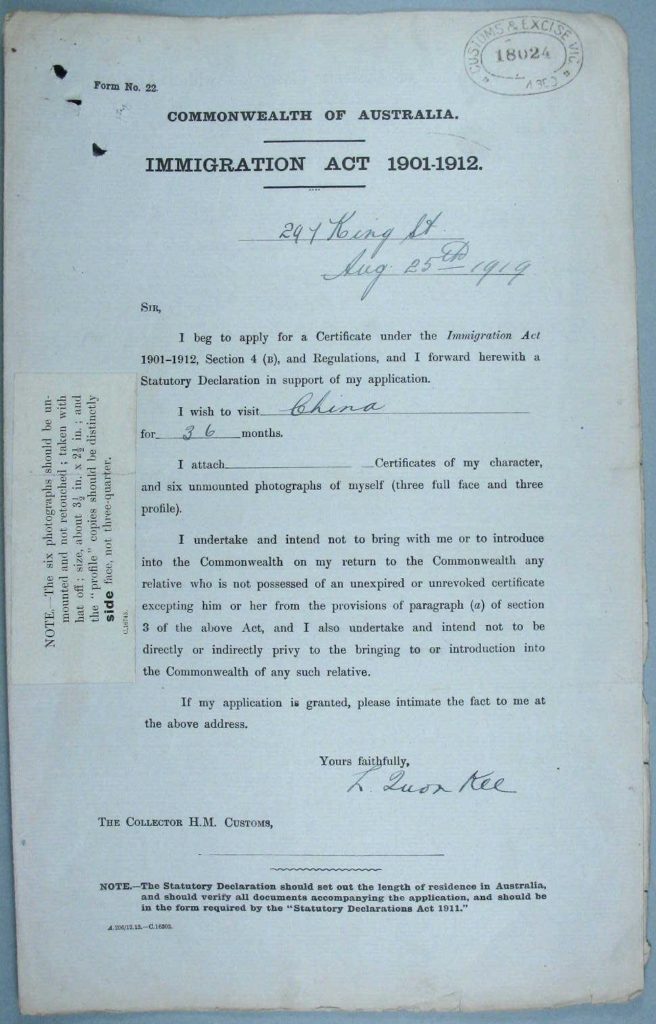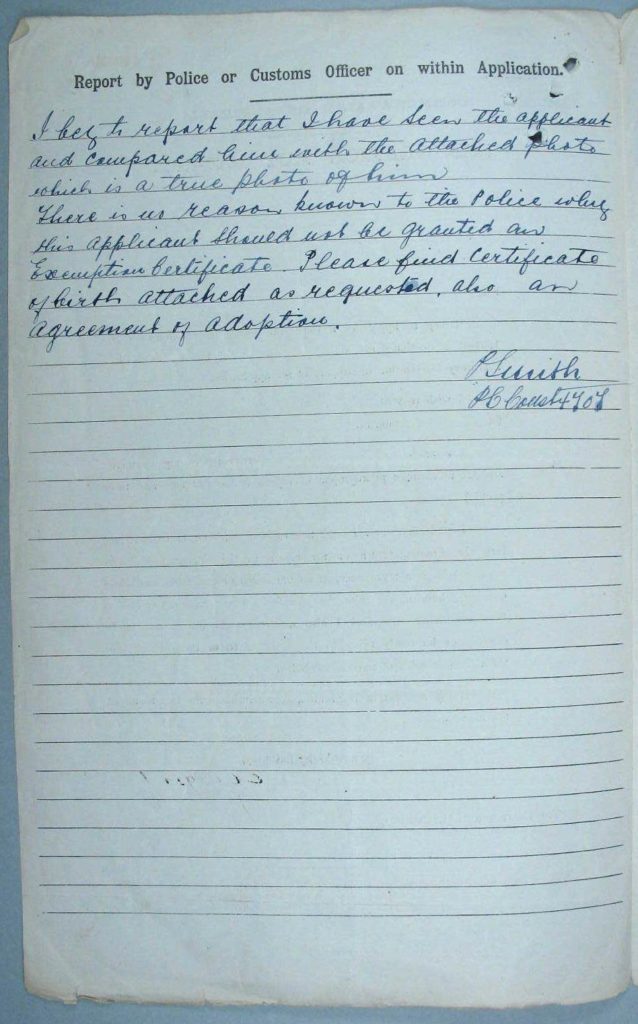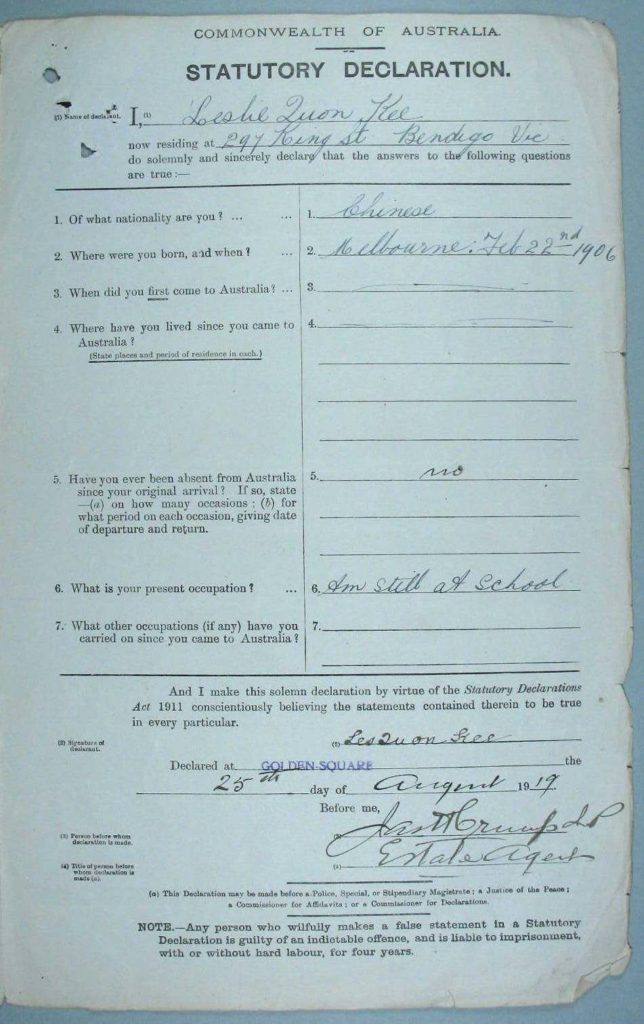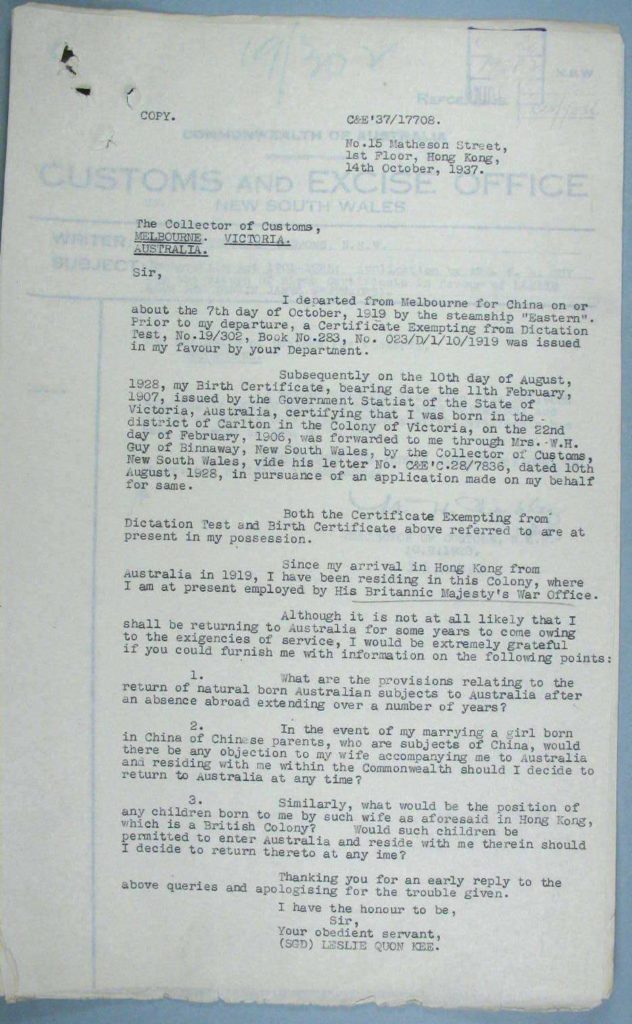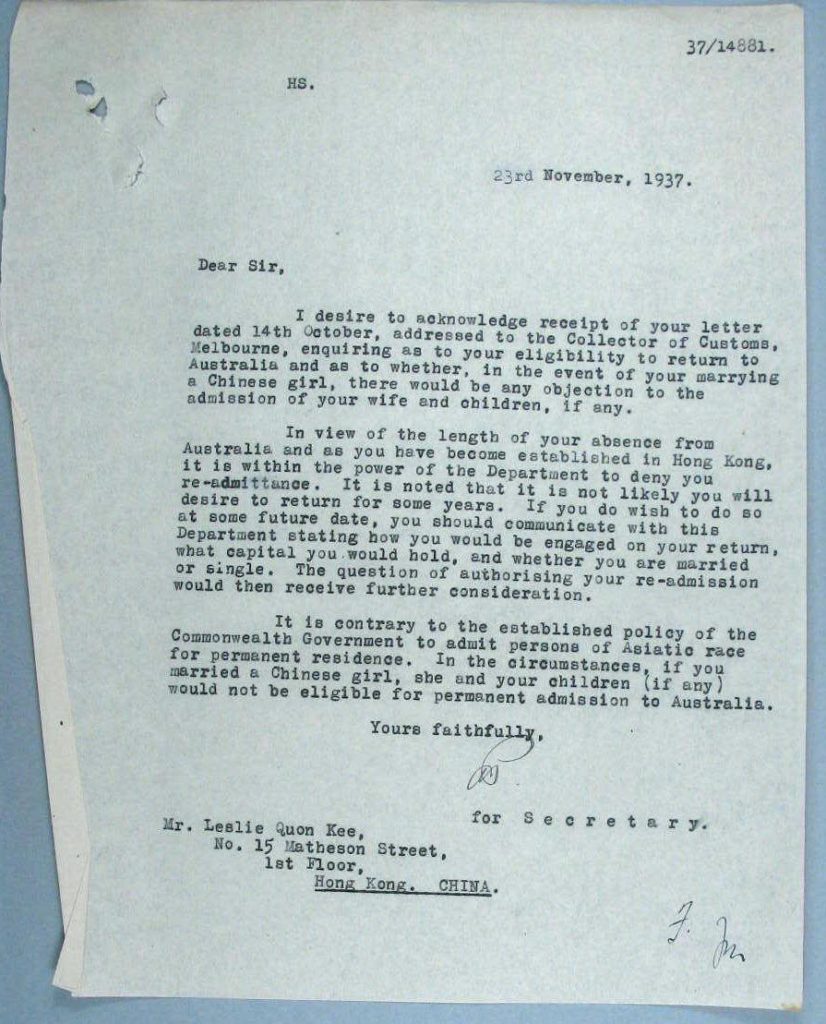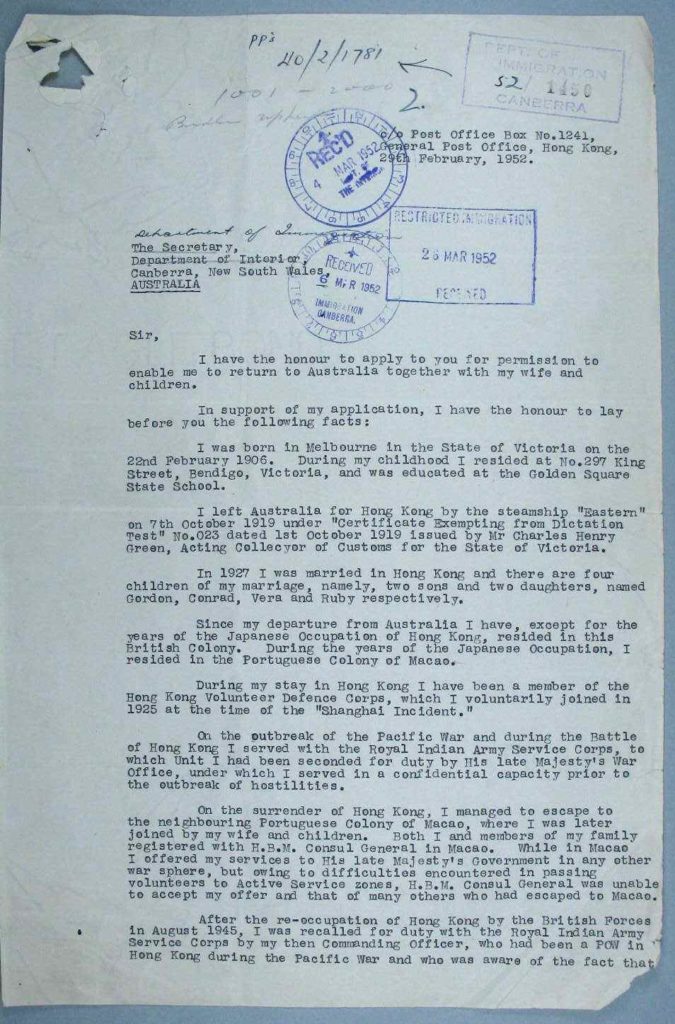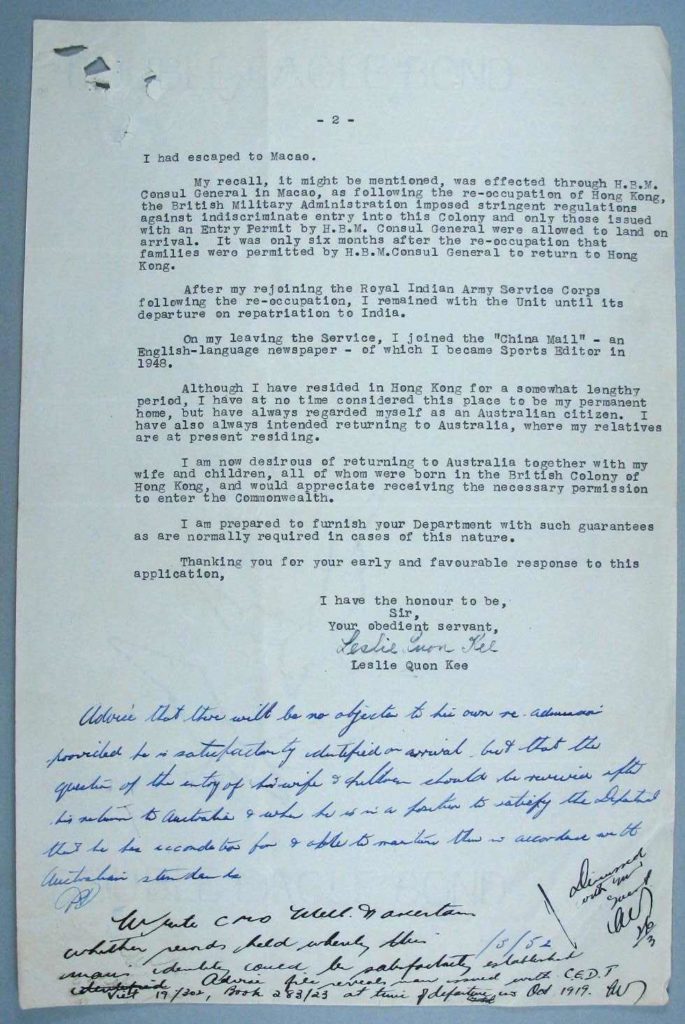From the last decades in the nineteenth century local photographic studios began opening across Victoria in country towns and Melbourne suburbs. Photographic technology had developed to a point that it was now within the reach of many. Some of the collections of these photographic studios have survived in the form of glass plate negatives – often labelled the name of the purchaser or subject.
Commercial photographer, Vincent William Kelly, ran photographic studios in various locations in Bendigo, Victoria, from 1904 to 1958 and was also associated with Bartlett Brothers Photographers, Bendigo between 1936 and 1938 and also Moonee Ponds in 1904. A collection of over 1,000 glass plate negatives of his were gifted to the State Library of Victoria by the Rosenberg family.
Tucked within collections, like the Kelly collection, are distinctive portraits of Chinese Australians – posed full frontal and in profile – the poses required for a Certificate Exempting from Dictation Test (CEDT).
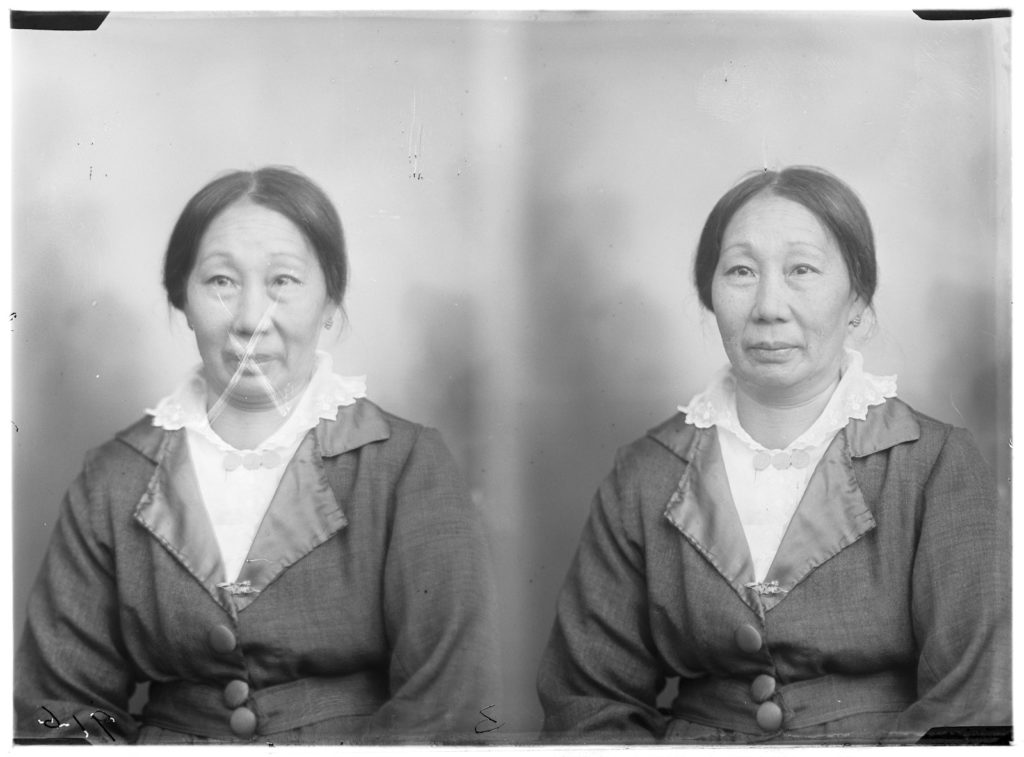
Note the photographer’s mark indicating which negative was not to be used.
[State Library of Victoria, H2019.83/182]
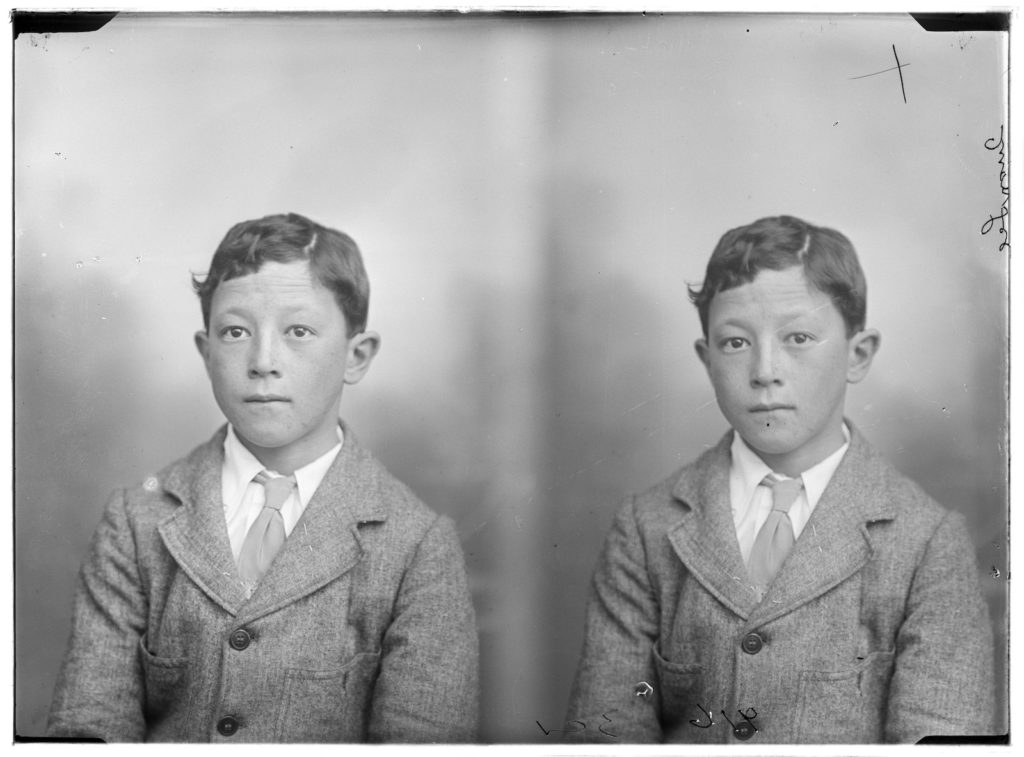
Note the photographer’s mark indicating which negative was not to be used.
[State Library of Victoria, H2019.83/184]
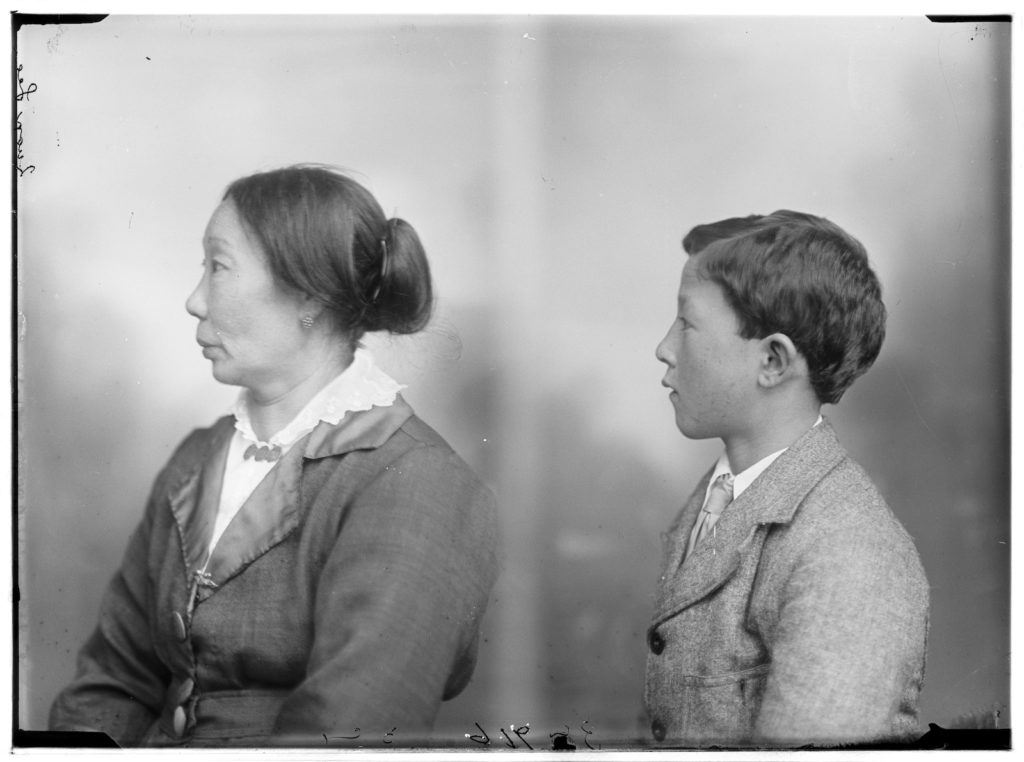
Taken in profile these portraits make it clear that these portraits are to be used for identification purposes.
[State Library of Victoria, H2019.83/183]
A search of the Victorian CEDT Registers finds an entry for their travel in 1919.

[Index entry for Lucy and Leslie Quon Kee, 1919, Register 2, p. 43, Victorian CEDT Index, http://www.cafhov.com/vic-cedt-index/?type=id&search=7189 and http://www.cafhov.com/vic-cedt-index/?type=id&search=7188 (original data taken from ‘Register of Certificates Exempting from the Dictation Test, 1915-1933’, NAA: B6003, 2)]
The Registers record them leaving on the Eastern and Lucy returning to Sydney in 1940 on the Tanda but no record of Leslie returning. With a bit of archival digging we discover that he too also returned to Australia.

While there is no link to a file in the B13 Series held at the NAA (see more about this here) and also no results if we manually search the B13 series for the C&E numbers written in the Registers there are quite a few relevant results if we search for ‘Quon Kee’. From these files we learn a lot more about Leslie and the Quon Kee family and also find Leslie’s 1919 CEDT application in a later Department of Immigration correspondence series.

[NAA: A446, 1963/41986]
Also included on the file are copies of the photographic portraits of Leslie taken by the Vincent W. Kelly Studio in Bendigo. Leslie was attending the Violet Street school in Bendigo.
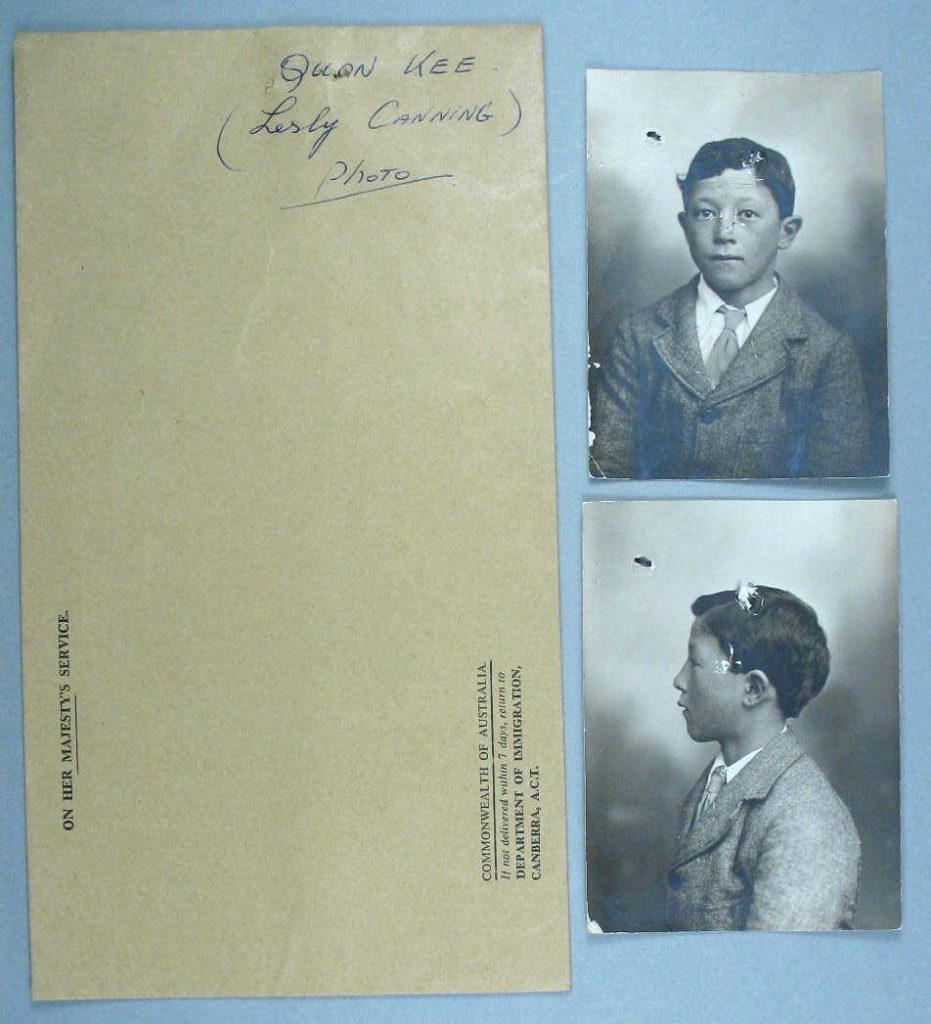
[NAA: A446, 1963/41986]
From the file we learn that Lesley was born in Melbourne on 22 February 1906 but adopted by Mrs Lucy Quon Kee not long after he was born. She was planning to take him to ‘China’ to be ‘educated and the Chinese language’. The reported intention was to stay for three years and then return.
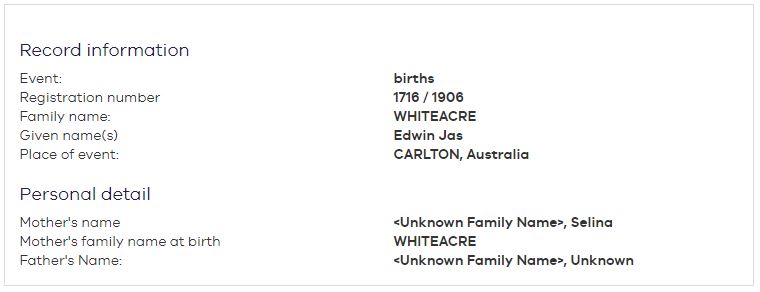
[Victorian births, deaths and marriages, 1716/1906]
Because Leslie was a ‘child of European race or extraction’ and not under the ‘care or charge of some adult person of European race or extraction’, under the Emigration Act 1910 he needed special permission to leave Australia. Inquiries were made as to why he was travelling, the nature of his relationship with Mrs Quon Kee and the character of his adopted father (who was deceased). Once this information was provided permission was granted for the two of them to leave in October 1919.
Lucy and Leslie’s final destination was actually Hong Kong. In 1928 Leslie’s adopted sister, Mrs Maud Guy (nee Quon Kee) of Binnaway in New South Wales, wrote to customs officials asking for the return of Leslie’s birth certificate. Leslie was working as a clerk at a firm of solicitors in Hong Kong and needed to prove he was a British subject in order to become an articled clerk.
Nine years later, in 1937, when Leslie wrote to officials he was working for the British War Office. He wanted to know whether, as a ‘natural born Australian subject’ whether he would be able to return to Australia after being away for several years, would there be any objects if an Chinese born wife came with him and what would the status of any children be. He was advised that it was ‘within the power of the Department’ to deny him readmittance due to the fact that he had been ‘domiciled’ in Hong Kong and that it was ‘contrary to the established policy of the Commonwealth Government to admit persons of Asiatic race for permanent residence’.
[NAA: A446, 1963/41986]
In 1940 Lucy returned to Sydney and spent the last few years of her life with her daughter Maud before passing way aged 73 in her daughter’s home.
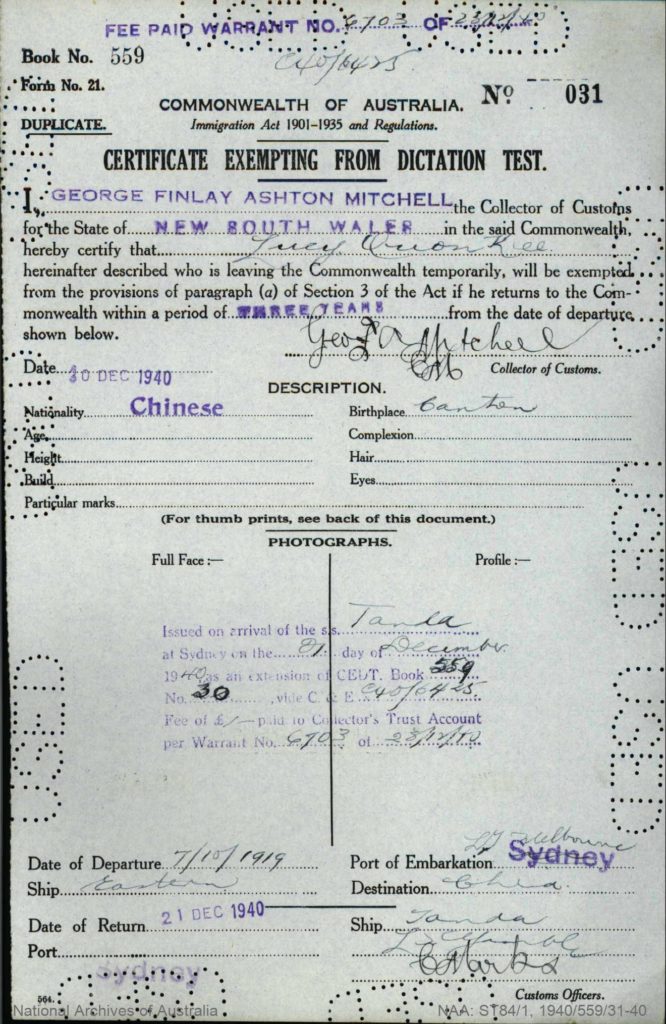
[NAA: ST84/1 1940/559/31-40]
By 1952 Leslie was keen to return to the country of his birth with his wife and children. In his letter requesting permission to return with his family it is clear he had lived a full life in Hong Kong. At some point he had changed his surname to Channing and in 1927 married Lucy, who was born in China. Together they had four children, Gordon, Conrad, Vera and Ruby. In his appeal to authorities he was keen to demonstrate his loyalty to the British Empire by detailing his participation in the Hong Kong Volunteer Defence Corps and the Royal Indian Army Service Corps where he served in a ‘confidential capacity’. During the Japanese occupation he was forced to flee to Macao where he again tried to serve in the war effort. After the Japanese surrender in 1945 he was recalled to Hong Kong to serve in the Royal Indian Army Service Corps. In 1948 when the Corp was repatriated back to India he became Sports Editor of the China Mail.
[NAA: A446, 1963/41986]
After investigations into his business interests as an Australian-born subject Leslie was permitted to return and his wife Lucy and youngest daughter Ruby was permitted to arrive on a five year exemption. His eldest three children were initially refused entry.
Leslie obtained an Australian passport in 1952 and toured Australia with a Hong Kong soccer team as their coach in 1953. He was also planning to establish a branch office of Woe Yue Company, a Hong Kong import-export firm in Australia.
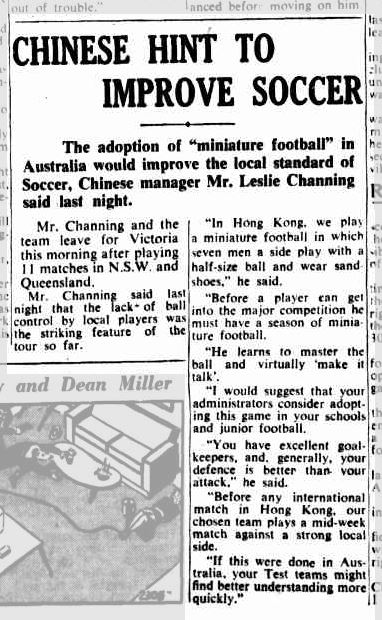
After considerable back and forth, misunderstandings and a several interventions on their behalf, including the Australian Government Trade Commissioner in Hong Kong, permission was obtained for the whole family to come to Australia. The older children were allowed entry ‘subject to compliance with normal immigration requirements as to health and character and on the understanding that should any of the children become married to non-Europeans before arrival in Australia, such marriage will give no claim to the entry of their non-European spouses’.
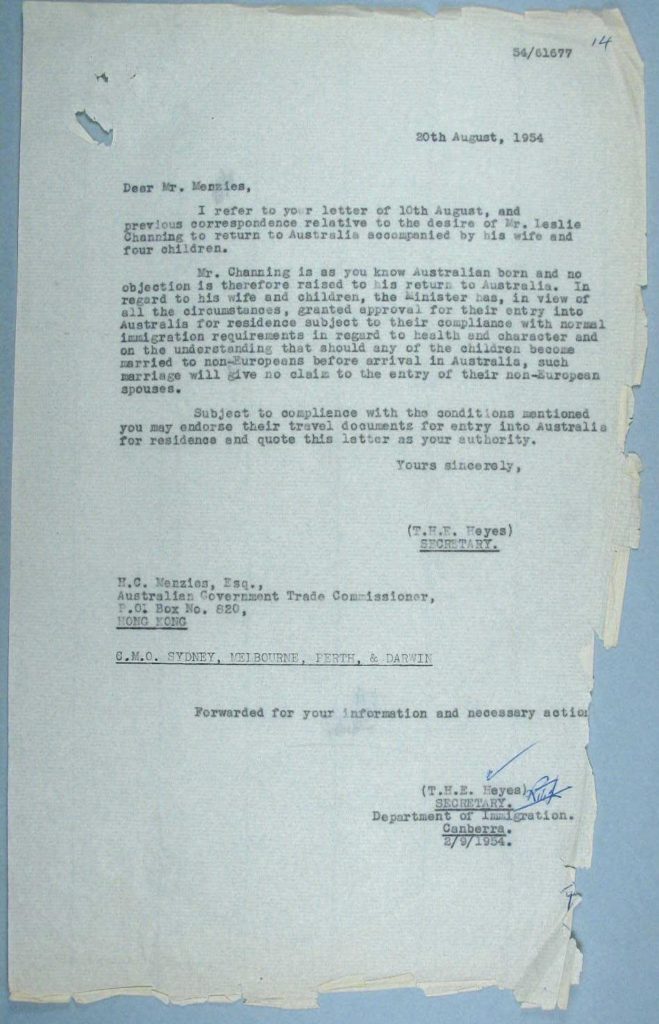
[NAA: A446, 1963/41986]
Gordon and Conrad arrived in 1955 on British Passports issued in Hong Kong with visas for permanent residence. Lucy, Vera and Ruby landed in Sydney in January 1957, delayed by evidence of tuberculosis in the lungs of Lucy and Vera.
Leslie and Lucy ended up settling and living out the rest of their lives in Canberra where Leslie worked as a court reporter for the Canberra Times. They still have descendants living in Australia.
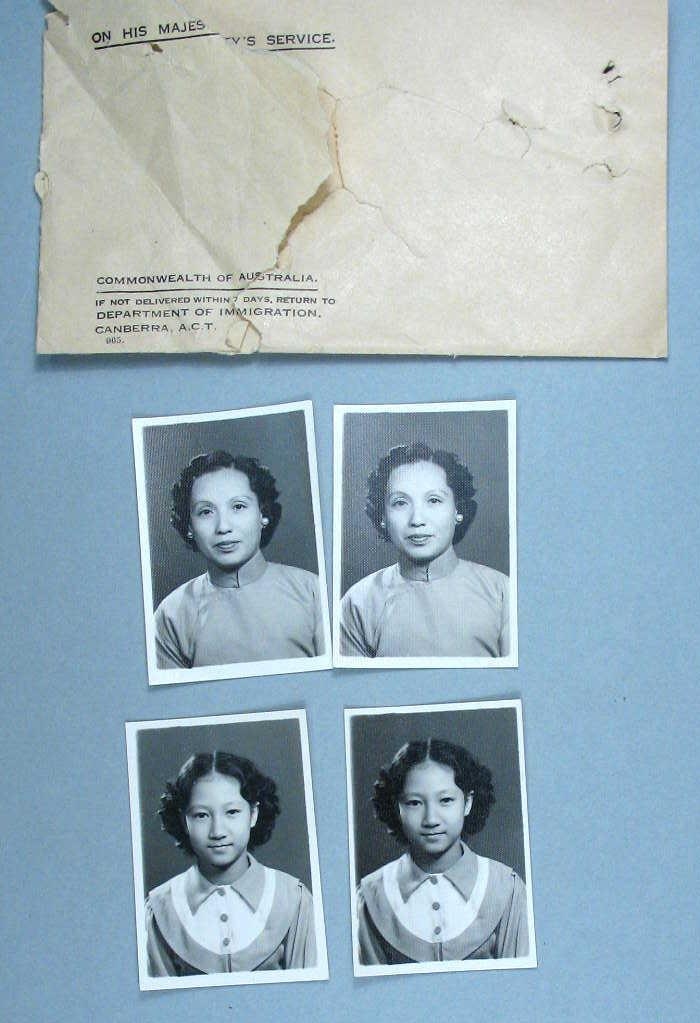
[NAA: A446, 1963/41986]
Further information
McKinnon, Leigh, A biographical dictionary of historic figures in Bendigo’s Chinese Community, Golden Dragon Museum, 2015

